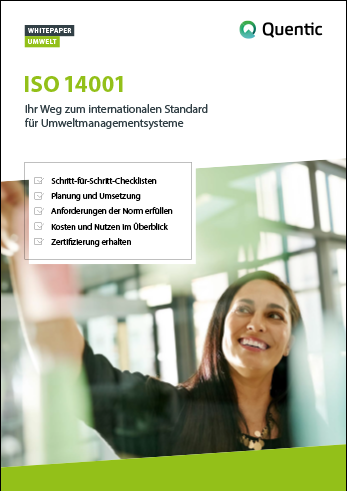Plan-Do-Check-Act cycle in ISO 14001
PLAN
Clause 4: Context of the organization
Analyzing internal and external topics of relevance for an EMS as well as any interested parties makes it possible to get an exact picture of the context of the organization. The next step is to determine the scope of the EMS and the processes it must take into consideration.
Clause 5: Leadership
Top-level management is not only responsible for defining environmental policy and establishing the requisite organizational structure. It must also demonstrate commitment and engagement by taking on additional duties. This includes supporting employees and their managers in implementing the EMS and introducing specific measures to promote continual improvement processes (CIPs).
Clause 6: Planning
This stage involves determining environmental risks and opportunities and deriving corresponding measures. In addition, the organization must identify and evaluate its environmental aspects, i.e. its interactions with and impact on the environment. Environmental objectives and measures must aim to address and reduce the impact of environmental aspects significant to the company. The organization must also analyze its obligations under environmental and other legislation and ensure it fulfills them.
DO
Clause 7: Support
Needless to say, the necessary resources must be made available to support the EMS effectively. This also includes establishing and developing environment-related competencies. The organization must also define suitable processes for internal and external communication and ensure these processes are documented.
Clause 8: Operation
Environment-related processes must be guided by the objective of minimizing their environmental impact. While this includes in-house processes, it also extends to upstream, downstream, and outsourced processes as well as the processes of contractual partners, the entire value-added chain is scrutinized. It is also important to put measures in place to prepare for emergency situations.
CHECK
Clause 9: Performance evaluation
By monitoring, taking measurements, performing analyses, and undertaking evaluations of key system parameters, the organization can determine the extent to which its environmental performance has improved. Conducting internal system and compliance audits and regular management reviews can also assist with this.
ACT
Clause 10: Improvement
By highlighting non-conformities and taking the necessary corrective actions, the aim in this stage is to continually improve both the EMS and environmental performance.





